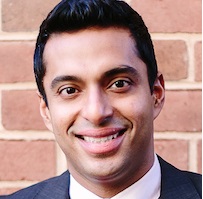Health care disruptors are betting the farm on digital health technology, and they have the funds to validate their enthusiasm. Investments in digital health startups came in at a staggering $8.1 billion at the end of 2018, marking an increase of 42% from 2017, according to Rock Health. While investments are slowly beginning to level out in 2019, analysts see this as a sign that the industry is maturing; not, as some thought, a signal of pending collapse.
Health tech has been touted as the cure-all for financial problems; for physician shortages; and most importantly, for the disparities in care that can leave patients with high socioeconomic risk falling through the gaps.
(Related: Getting Paid for Using Telehealth to Keep Women Alive Is Hard: Startup Exec)
But, in the midst of the accolades, there are a few concerned voices that don’t see health tech delivering on this last promise; voices that are speaking out for the vulnerable, like Medicaid beneficiaries, whom they assume may not have broadband access or a smartphone. With the average price tag on a smartphone reaching $535 in 2019, according to Statista, the benefits that mobile technology provides can seem like a privilege reserved for the rich.
It is true that traditionally at-risk populations — economic or geographic — are much less likely to have home broadband service — of populations making less than $30,000 annually, only 56% have home broadband internet; in rural communities, regardless of income, only 63% have broadband, according to Pew Research Center.
However, mobile broadband is not limited to the advantaged. Ninety percent of people in the United States have access to mobile broadband coverage (2G/3G/4G, etc.), which uses cell towers to transfer data to mobile phones and extends service to those disadvantaged by income and distance.
With our society increasingly dependent on the internet, particularly when it comes to essential activities like finding employment — a Pew survey of recent job seekers found that 90% had used the internet to research jobs, and 84% had applied for a job online — smartphones have actually become a necessity for disadvantaged populations.
Smartphone ownership is at 71% both for low-income and rural communities, and a significant percentage of economic and geographic at-risk populations are reliant on smartphones for internet-access (26% and 20%, respectively). For users in these demographics, smartphones are often a necessary line item bumping other things out of the budget, taking precedence over technology like a laptop or tablet.
So what’s the myth and what’s reality? Does the lack of internet access affect the care that at-risk populations receive? Are the benefits of digital care limited by privilege?
The answer, as is often the case, is yes and no.









 October 03, 2019 at 02:17 AM
October 03, 2019 at 02:17 AM










